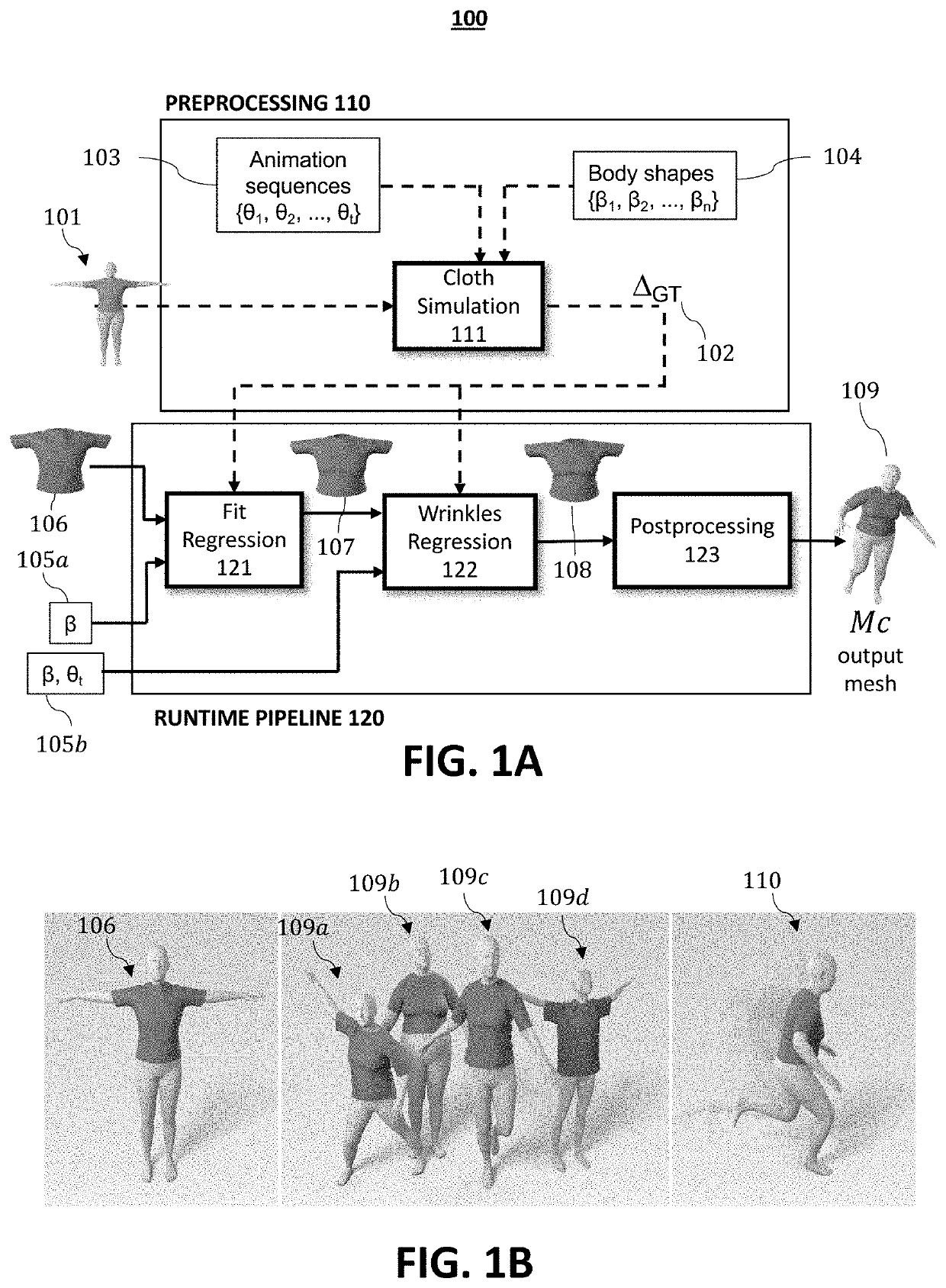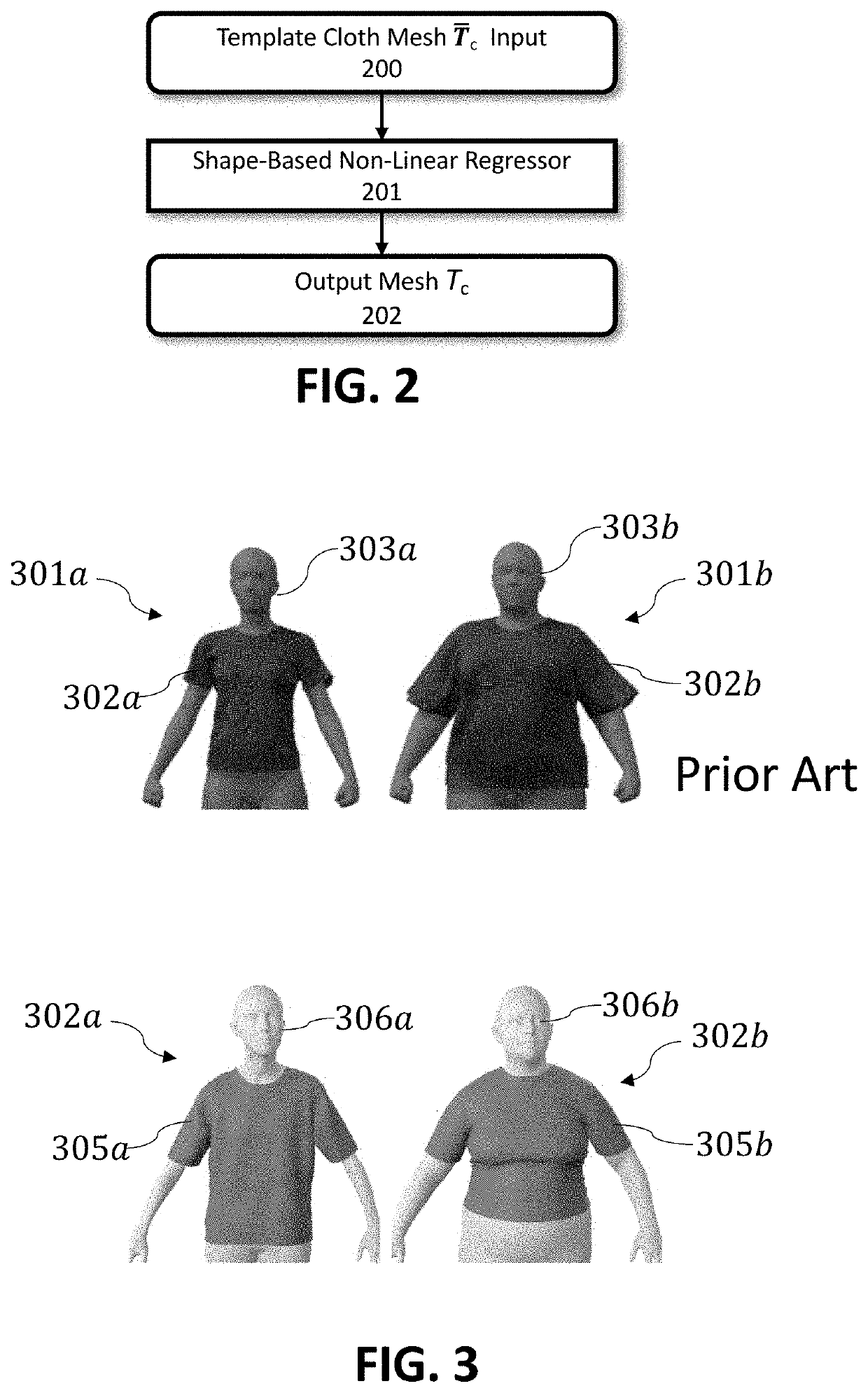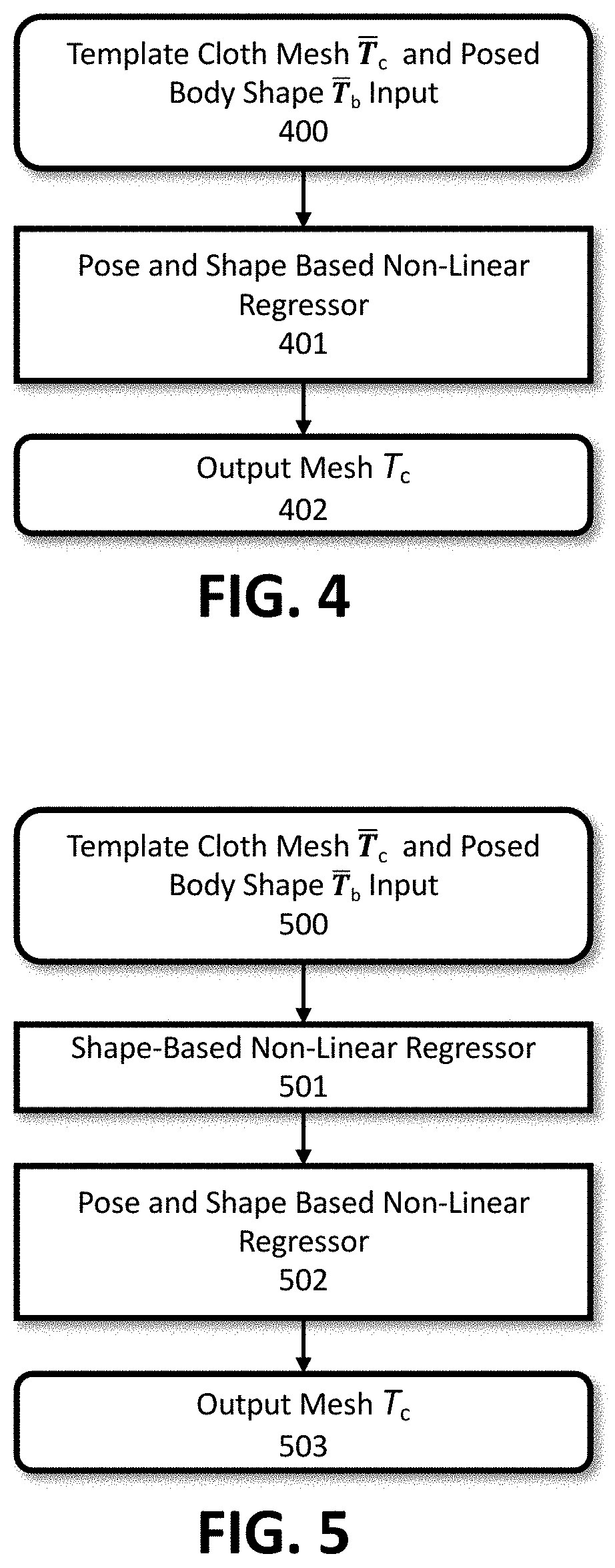Learning-based animation of clothing for virtual try-on
a learning-based, virtual try-on technology, applied in the field of computer modeling systems, can solve the problems of inability to transmit the real cloth behavior needed for virtual try-on, inability to generalize methods to new motions, and total simulation costs, and achieves easy integration into the skeletal animation pipeline, avoid linear data-driven models, and low computational overhead.
- Summary
- Abstract
- Description
- Claims
- Application Information
AI Technical Summary
Benefits of technology
Problems solved by technology
Method used
Image
Examples
Embodiment Construction
[0047]The above and other needs are met by the disclosed methods, a non-transitory computer-readable storage medium storing executable code, and systems for 3D modeling of clothing and cloth items in computer applications such as virtual try-on but may used in other applications, including, for example, garment design and virtual modeling, motion capture applications, biomechanics and ergonomics design and simulation, education, business, virtual and augmented reality shopping, and entertainment applications, including animation and computer graphics for digital movies, interactive gaming and videos, human, animal, or character simulations, virtual and augmented reality applications, robotics, and the like. The Figures and the following description describe certain embodiments by way of illustration only. One of ordinary skill in the art will readily recognize from the following description that alternative embodiments of the structures and methods illustrated herein may be employed...
PUM
 Login to View More
Login to View More Abstract
Description
Claims
Application Information
 Login to View More
Login to View More - R&D
- Intellectual Property
- Life Sciences
- Materials
- Tech Scout
- Unparalleled Data Quality
- Higher Quality Content
- 60% Fewer Hallucinations
Browse by: Latest US Patents, China's latest patents, Technical Efficacy Thesaurus, Application Domain, Technology Topic, Popular Technical Reports.
© 2025 PatSnap. All rights reserved.Legal|Privacy policy|Modern Slavery Act Transparency Statement|Sitemap|About US| Contact US: help@patsnap.com



